Sharing a post from my presentation at Low Carb Breckenridge 2017 and at Uniformed Services Academy of Family Physicians in Seattle. It was a privilege to be part of the speakers at these events and together we are trying to create a new paradigm restoring health around the world.
Fitness expert Covert Bailey in the 1970’s set this as a goal for health and effortless athletics: be a “better butter burner”. Here is a clip from one of his early books
Today Mark Sisson inspires you to become a “Fat Burning Beast”. Most modern day athletes, and citizens, spend the day burning bagels. When it comes to health Dr. Ron Rosedale summarizes the goal “Your health and likely your lifespan will be determined by the proportion of fat vs sugar you burn over a lifetime.” From what I observe he is correct. 30 plus years of research and experience has lead Dr. Rosedale to come to this conclusion. We have it easier with doctors like him challenging beliefs and dogma and getting results.
There is nothing new under the sun. My friend and colleague Dr. Phil Maffetone has coached world class and recreational athletes with this goal in mind for years. With the resurgence of lower carbohydrate and ketogenic diets for obesity and athletic performance we are enjoying the reemerging science.
Enter an old concept called “The Crossover Point” . The late Arthur Lydiard’s method in the 60’s tuned by Dr. Phil Maffetone in 1970s and 1980s with athletes such as Mark Allen, Stu Mittleman, and Mike Pigg focused on aerobic training in relation to fat burning. Lydiard’s runners did their long runs fasted, as this was the norm for the day, and the end result was fat adaptation and recruitment of fast twitch oxidative fibers in a glycogen deplete state. They took only water during the 22 mile Waitituru Road route and worked up an appetite that was quenched at local breakfast buffets.
Maffetone had a more proactive nutritional approach. Never having bought into the high simple carb and low fat mantra of the day; he encourage little to no grain, healthy fats, and remove processed “junk” food. This was not absolutely “low carb” for the elite but a healthy 40/30/30 as an example for Mark Allen [40%carb/30%fat/30%protein]. Keep in mind that Mark Allen was likely not insulin resistance in his younger competitive days.
For Lydiard and Maffetone athletes- high mileage weeks with long, slow, distance training was the norm. Only after the base was built was intensity added. The base built mitochondria, capillaries, enzyme processes to oxidize fat, tissue adaptations, and countless other physiological changes aligning with health and fitness. Modern methods attempting to hack this slow but necessary process emphasizing intensity over quantity has become the trend in training.
Higher speed, intense intervals, and constant “hard cardio” necessitate an immediate need for carbohydrates. An entire sports nutrition industry of high glycemic bars and goos has been born. [note: I used to be sponsored by one of these companies, and it worked ok for me until I became pre-diabetic]
What is Metabolic Efficiency and Flexibility
“Efficiency” and “economy” are often used to describe moving at a certain speed with the least amount of effort. I think of “efficiency” more on terms with the tissue and mechanical properties of movement- how good is your elastic spring? An elite Kenyan runner harnesses elastic recoil like a super ball whether burning carbs at high speed or burning fat in a slow recovery jog. The running motion of Usain Bolt is certainly efficient to the gold standard- he has 9 gold medals.
In a practical way “economy” takes into account movement measured over longer duration and many physiologic and movement parameters apply here. My friend Lee Saxby describes the optimal human with the right combination of “hardware”, “software”, and “energy” for the defined task.
“Hardware” is your structure. In my opinion it all starts at the foot and if your foot is poorly functioning foundation there will be inefficiency and dysfunction up the kinetic chain. Here is a drill: jump rope for a minute. Is this effortless and springy? Or do you land with a thud or like a hacky sack? All the “core” training in the world will not compensate for a dysfunctional foot and ankle.
“Software” is how we move. Swimmers spend countless hours mastering the movement through the water to cover the length of the pool with fewer strokes and effort at any given pace. Golfers hit 1000’s of balls at the range to wire in the unconscious nearly perfect swing. They will always tune up at the range too before important rounds with the easy metronomic swings. We have in our brain what is called the “homunculus”. This is our motor mapping. How this is mapped through repetition creates the pattern. Practice does not make “perfect” , but rather it makes “permanent”. East African youth running to and from school barefoot maps out a perfect pattern. Short of this, drills, barefoot strides, and a focus on running form help us map a better pattern.
My favorite simple tool for biofeedback and homunculus (neurologic map) rewiring is the TrueForm Runner motorless treadmill. You make it go and runners must find their own optimal posture, rhythm, balance, relaxation, posterior chain recruitment, and hip extension to make it hum along while you are humming a tune. Kids are naturals on the TrueForm, adults not so much. See our video series. Also watch these 2 videos on running form
The third and often overlooked component of the optimal human organism is the “energy” systems. For health and endurance performance this is the ability to use more fat for energy while using less carbohydrate for energy. Why care about this? A best a trained runner can carrying 1,500 – 2,000 calories of carbohydrates (less for an insulin resistant or pre-diabetic/diabetic athlete) and at least 50,000 calories of fat, even in the leanest runners. Whether we evolved or were created, it does not make sense that carbs are the preferred fuel. If it were, in my opinion, we would not be here top of the food chain .
Carbohydrates can activate fat-burning enzymes to burn fat for energy, but the goal is to create a bunch of fat-burning enzymes which ignite the “logs” (fat) over the “kindling” (carbs). Proper nutrition and training ignites these fat-burning enzymes and you can become a butter burning beast all day and night. And as Dr. Rosedale points out; for health it is better to burn fat than sugar as the former gives less “exhaust” or reactive oxidative species (ROS).
How Do We Train Metabolic Efficiency?
With the end goal being an improved capacity to use fat as fuel, we will discuss the nutrition and training principles to move the cross over point to the right (more fat and less carb at a given effort and speed). Many athletes apply rigid detail and specificity to their training schedules with little attention to the diet. This will fail as I and others believe that the most important part is what you eat.
This is not a calorie deficient diet and may not even be a strict low-carbohydrate, Atkins-style diet. It is tailoring your macronutrients (carbohydrates, fats and proteins) along with adjusting aerobic exercise pace to increased fat utilization. That being said- junk food, sweetened beverages, and simple sugars/starches are off the table and “slow carbs” of natural source are tailored to the training volumes and the individual’s carb tolerance.
Months and even years of this healthy sustainable training increases mitochondrial density, mitochondrial enzymes, and capillaries to deliver oxygen, and lymphatics to “take out the garbage”. By keeping insulin response low, we are able to exercise longer and make it through the day and night with fewer calories, reducing the need to consume sugars and increasing utilization of our internal body fat. Our bodies will sense what to replace when the meal becomes available.
You must adjust the diet and exercise together. Eat more healthy fat, eat few to no refined carbs, and slow the heck down! How long does the fat adaptation take? Dr. Stephen Phinney showed in 1983 with fit cyclists if can happen in 4 weeks [see study]. With older more insulin resistant athletes it takes longer in my experience. Some athletes competing in endurance sport requiring bouts of super high intensity (think cyclocross) might even cycle training periods of metabolic efficiency followed by more high intensity phases. Everyone adapts different to training stimuli.
Moving the Crossover Point (My Personal Journey)
We are like a hybrid engine, burning a mix of both carbohydrate (gas) and fat (electric) to fuel exercise up to maximal intensity, where it is all gas. Easy efforts can be almost all electric for a healthy athlete. How can we measure this? Enter the Metabolic Cart. Accurate measurements can be made on with a VO2 Max test or a sub max test.
Below the AeT (Aerobic Threshold) the body is using primarily fat as fuel. As the intensity of exercise increases you will exceed your AeT as body prefers to use more carbohydrate for fuel. Like a switch the body shifts from fat to sugar but your brain may not be aware. The next threshold is AT (Aerobic Threshold). Most of us know this as the “red line” above which acidosis occurs. Suffice it to say there is a lot of biochemistry happening increasing or decreasing the use of carbohydrates versus fat oxidation. Published literature by Drs. Stephen Phinney and Jeff Volek are available for the deeper dive or dig into their book “Art and Science of Low Carbohydrate Performance”. Another great reference is “Metabolic Efficiency” by Bob Seebohar.
With the Metabolic Cart the crossover point ( the intensity at which you start to burn carbohydrates instead of fat ) can be measured in terms of pace, watts (if cycling), or heart rate. You now have an accurate MAF heart rate to train below in order to increase your “butter burning” capacity as you teach your body to use more fat at higher intensities
My Journey into The Rabbit Hole of Metabolic Efficiency
In the year 2000 I became an early adapter to the MAF method. I was recovering from surgery to both of my feet and had little hopes of competitive running again. By chance while on a plane I picked up an airline magazine with an article by 6 time Ironman Champ Mark Allen explaining his resurrection after embracing slowing down and the Maffetone method. [http://duathlon.com/articles/1460/ ]Through this method Mark’s running pace at a HR of 150 dropped from over 9 min/mile to under 6 min/mile. This defines improved running economy. Not only was the running now almost effortless, the recovery was automatic.
So I did the “get faster by running slow” routine as I reentered the jogging world post-op. Whereas an easy day used to be 6:30 minute miles paying no attention to heart rate. I’m sure it was high but as a type “A” competitive runner high was good, right?. I bought a HR monitor and set it to 150 ( ~180-age at time) and started creeping at 12 min/mile around Denver’s Washington Park. My dog enjoyed being back on the trail so I tolerated the pedestrian pace while she sniffed.
The progression was pretty remarkable. In just 4 to 5 months of this I was finding myself effortlessly cruising the loops of the Park at close to 6 min pace at the same HR 150. 7 months after surgery and after only 5 months of returning to running I finished the Marine Corps Marathon in 3rd place in 2:28 in what was the most relaxed marathon I had ever run. It was not a personal best time (I had a couple sub 2:25s while putting pain in my body) , but certainly a new beginning in discovery.
Enter the Low Carbohydrate Diet
Still a carboholic (this was the ideal runner’s diet of the day) the next discovery was of pre-diabetes and metabolic syndrome while still running at a high level. See images for the progression from “Fit not Healthy” to “Fit and Healthy.”
And the final progression to butter burning happiness.
My Progression On Exercise Testing- The Treadmill Of Truth
Prior to Volek and Phinney’s FASTER [Fat Adapted Substrate Oxidation in Trained Elite Runners] Trial (below) maximal rates of fat oxidation in humans were generally thought to top off at about 1.0 g/min. But the textbooks will need to be re-written thanks to their work and to the athletes who volunteered as subjects to 3 hour treadmill testing and muscle biopsies. I know several of them.
Prior to the FASTER study where ALL of the low carb athletes burned over 1g/min of fat and NONE of the high carb athletes reached 1g/min, it was thought that 1g/min of fat oxidation limited high performance and the use of body fat, necessitating carbo loading and a constant stream of carbohydrate during activity. Here is an image from the state of the science 10 years ago.
From Good Butter Burner to Better Butter Burner
Below are images from my VO2 Max testing performed in January of 2016 and February 2017 and show an interesting progression.
In 2016 I clearly had a good engine for my age with a VO2 max near 65 ml/Kg/min. As a frame of reference most elite endurance athletes in their prime have values in the 70’s with a few reaching over 80. Healthy and fit 50 year olds have values in the 30’s and 40’s. Steve Prefontaine and Lance Armstrong achieved values above 80, although Lance might have had some help. The important numbers though for running economy though are your AeT (below this burning fat) and AT (above this acidosis occurs). The higher you push AeT and AT up the longer you can run fast. AeT is the “crossover point” and in 2016 was pretty good with VO2 of 34 a HR of 134 while burning mostly fat and capacity to burn over 1 g/min of fat. This is high by most standards as I’d been eating low carb high fat since about 2012. Acidosis starts creeping in at a HR of 144 and I achieved a max HR just above 180. Recovery at a minute not too good dropping from 181 to only 179. I was tanked.
The 2017 results surprised me. When sharing the results with Dr.Steve Phinney he replied “you are clearly kissing 2 g/min [fat oxidation]”. The Max has not changed, but important for economy the AeT is now at a HR above 160 and VO2 of 55 while burning over 1000 cal/hr primarily fat. The treadmill was going close to 6 min/mile at a grade during this phase of the test. The AT where acidosis starts occurring is happening much closer to my max HR. So in summary running very close to max while burning fat and not accumulating acidosis. The recovery is also immediate as HR goes from 178 to 113 in 1 min. Instead of being tanked, I’m feelin’ good and ready to go again.
What was different from 2016 to 2017? I have a few thoughts. Maybe it just took a long time to fully fat adapt and teach my body to be a complete butter burner. Another factor is stress and sleep. As a hospital physician taking night call on top of family life and many other responsibilities, the systems are not aligned for recovery. I started to respect the need for sleep more in 2016 and I think it has made a difference.
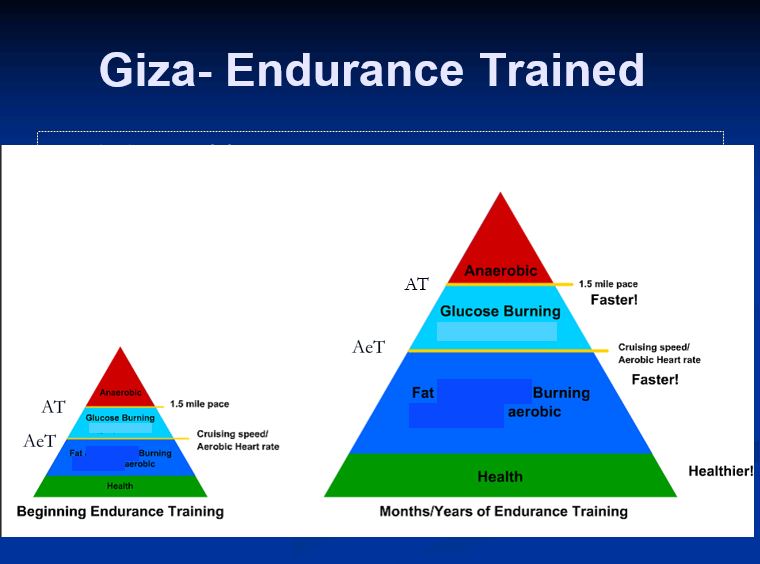
How do you teach your body to be a better butter burner? Read on.
Build an Aerobic Base
When you have a large aerobic base your body can use fats AND carbohydrates more efficiently. Depending on the fuel available and the effort an aerobically developed athlete can have metabolic flexibility. The work of renowned sports scientist Dr. Stephen Seiler has shown that the best athletes across endurance sport have mostly applied the “80/20” rule. At least 80% is easy aerobic with less than 20% intense doses. In the article below he summarizes: “Research on the impact of interval and continuous training with untrained to moderately trained subjects does not support the current interval craze, but the evidence does suggest that short intense training bouts and longer continuous exercise sessions should both be a part of effective endurance training.” He adds: “The available evidence suggests that combining large volumes of low-intensity training with careful use of high-intensity interval training throughout the annual training cycle is the best-practice model for development of endurance performance.”
Many runners minimize the importance of aerobic foundation because we don’t see the immediate results as we often do in speed training. Hard efforts produce some great positive adaptations, but compared with the aerobic work don’t improve fat burning. So I suggest for health and fitness build the aerobic first then add on the intensity. Or as Lydiard put it intensity is “the icing on the cake”.
Want to run the fat off your belly? Best plan is get the insulin low which allows fat burning and go out for mellow, enjoyable, and sustainable movement. If you want to keep the belly fat happy keep a constant flow of carbs coming from the drinks and gels and bars before and during your runs. You might feel a bit sluggish on these early no fuel runs, but trust me you will soon be making your own internal fuel from your fat. Keep the HR low, even mixing walk and run, especially on the uphills.
If You Eat Fat You Burn Fat. Eat Carbs You Burn Carbs.
The nutrition component has a largest effect on your fat-burning capacity and you must make changes to your diet to see results. For starters all sweetened drinks and grains from your diet must go. Maybe later you can add a few back on special occasion. Healthy fat is the foundation. This is NOT a low fat, high protein way of eating. Protein creates an insulin response inhibiting fat burning. There are healthy and safe carbohydrates on this plan. Lots of above ground and colorful veggies, even some legumes, just rid the grains. Caution with the sweet fruit and cut the starchy veggies. A great food list is shared by my friend and colleagues Dr. Tim Noakes www.realmealrevolution.com .
By keeping insulin low, fat burning rules the day and night, whether you are exercising or sleeping. Fiber from quality fruits and vegetables can stabilize blood sugar and add what some refer to as “fertilizer” for the healthy bacteria in your intestines (the microbiome). Think nutrient density and learn to cook for joy and variety. There is an abundance of low carb cooking sites and books available.
Will you ever be “bonk proof” with this plan? I believe you can achieve this as long as you do not exercise or race too hard. It’s that simple. Keep fluids and electrolytes adequate, especially sodium and magnesium before and during long events or training. I use UCAN Hydrate electrolyte mix for training- no calories, just the electrolytes.
For the occasional 2 hour plus runs I will add in some Vespa magic and for races some UCAN Superstarch. I’m experimenting a bit now with a packet of exogenous ketones for long runs– Keto OS– and I find it helps with satiety. Life is an experiment of one so try some different things.
One other bonus of this method is freedom from the “30-minute refeeding window”. Remember you are running on fat so no need to refill the carb tanks after exercise. Get some fluids and look forward to your next real meal.
What About Health? Isn’t All This Fat Going to Give Me a Heart Attack?
For those who follow my blog and the books and articles of others in the LCHF space, reviewed the literature, witnessed the full catastrophe of the highly promoted low fat diet, and made changes in your own life and monitored the results- the answers to this question are self-evident. Eating healthy fat does not make you fat or cause heart disease.
But remember you are an experiment of one so get objective measurements.
What is your waist? Your weight? If you check sugars are they improving? Insulin resistance improving? Is your HDL up? Triglyceride down? Consider an advanced lipid profile looking at LDL particle number and size, not just the total value. The low carb athletes in the FASTER trial all had superior markers of health.
One test that is the best objective marker of blood vessel health is the Coronary Artery Calcium Score or CAC. It blows away Cholesterol and traditional “risk factors” as a marker of risk. If zero calcium on the hi-resolution CT of the heart the risk of a heart attack is near zero. The more calcium one sees, the higher the risk, even if the person does not have the traditional “risk factors” for heart disease.
My father had triple bypass at age 35 and a bypass redo after a heart attack less than 10 years later. As a father of two I want to know what is under the hood , especially with the “dangerous” diet heavy on eggs and fat.
So I had the lie detector of coronary risk, the Coronary Artery Calcium Score (CAC) test performed last week. The results as you can see below are reassuring that I’m on the right path. A CAC score of absolute zero, an extremely uncommon result for a 50 yo American male with strong family history of heart disease. Yay!
To Test or Not to Test? That is the Question
Can you predict crossover point without a lab metabolic test such as a VO2 Max? It may be possible, but based on my own experience it is difficult and so many factors play in beyond just your diet and exercise patterns. If you are in the military there are exercise physiology labs at many bases. Universities often have labs and eager grad students looking for subjects.
In my region Ken Mierke at Fitness Concepts can perform the test and give you expert interpretation tailored to you. The website Metabolic Efficiency has testing sites also. The value of this testing may be worth more than the new bike wheels or latest hi tech shoes or gadgetry.
I encourage you to explore the site and read the books of Dr. Phil Maffetone.
Also the Bible- Phinney and Volek’s “Art and Science of Low Carbohydrate Performance”
Also explore the RUNRx tab of this site, especially this section http://naturalrunningcenter.com/category/endurance-engine/
Here is the video of the talk
video VO2 test 2016
video VO2 test 2017- looks the same but burning MORE butter






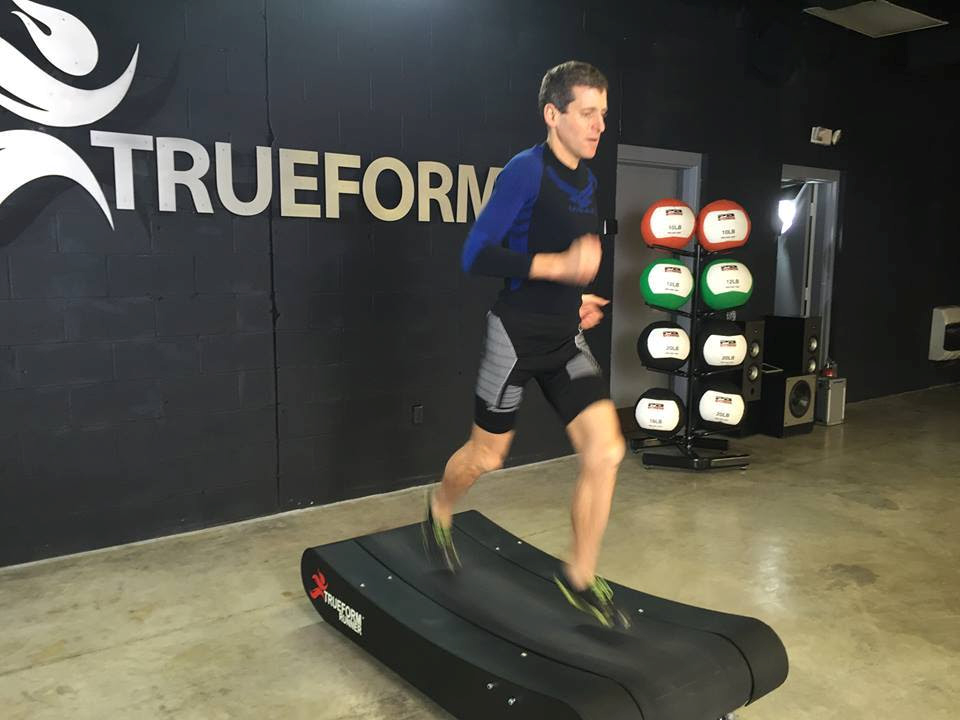
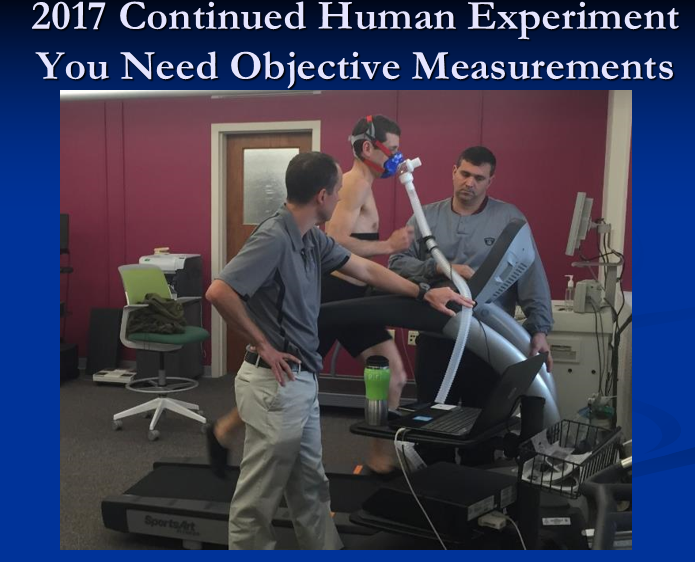


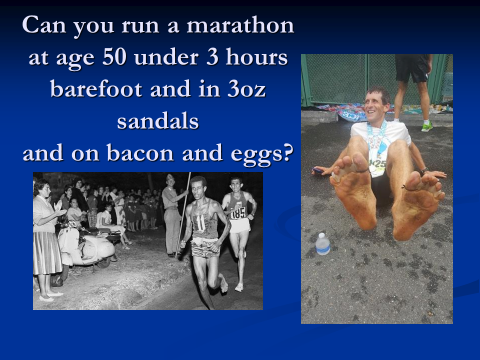
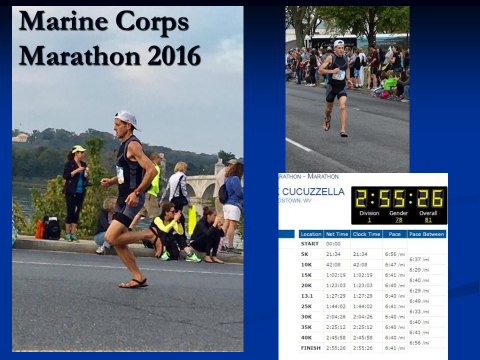

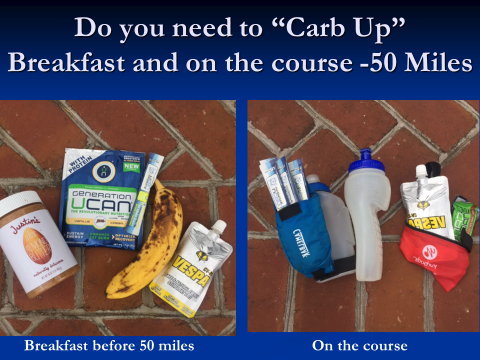
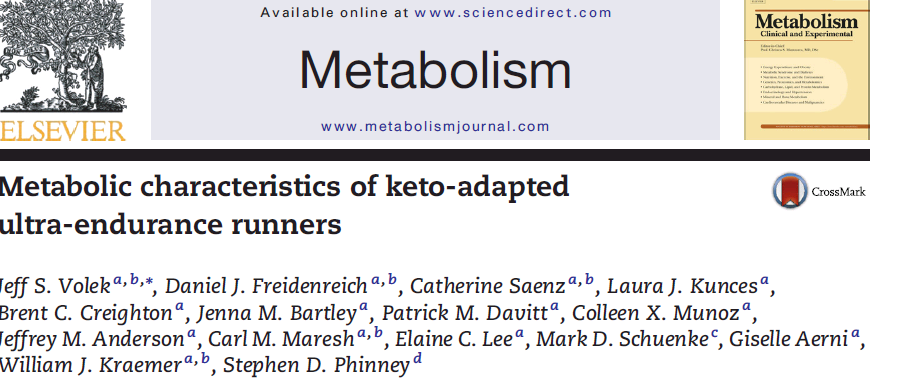

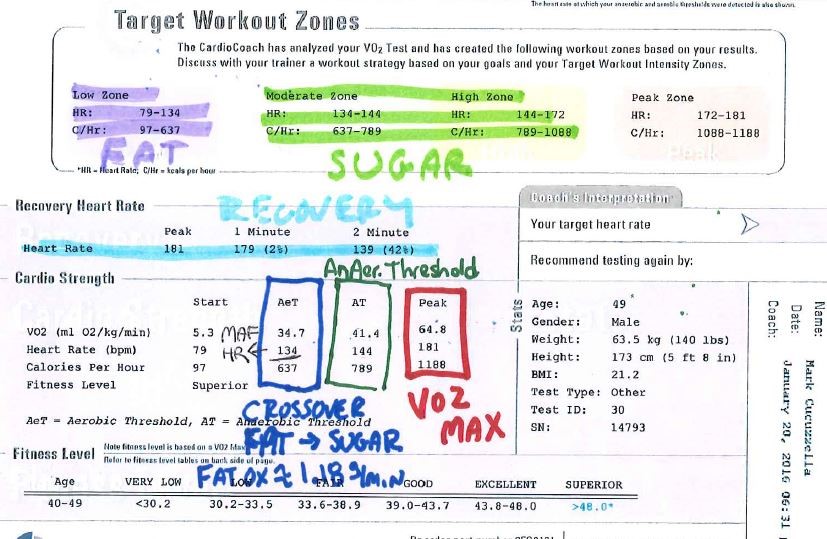

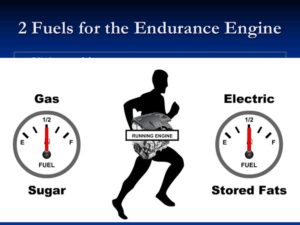
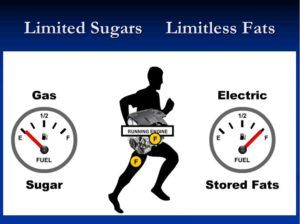
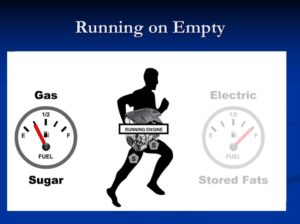
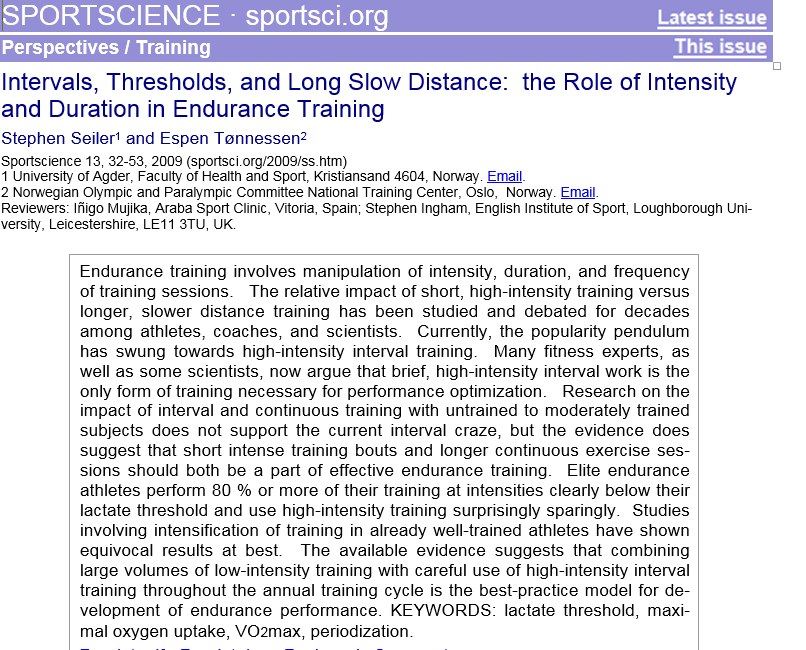
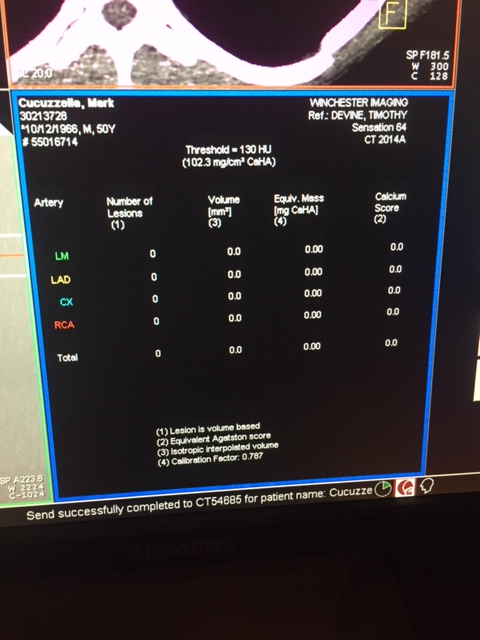
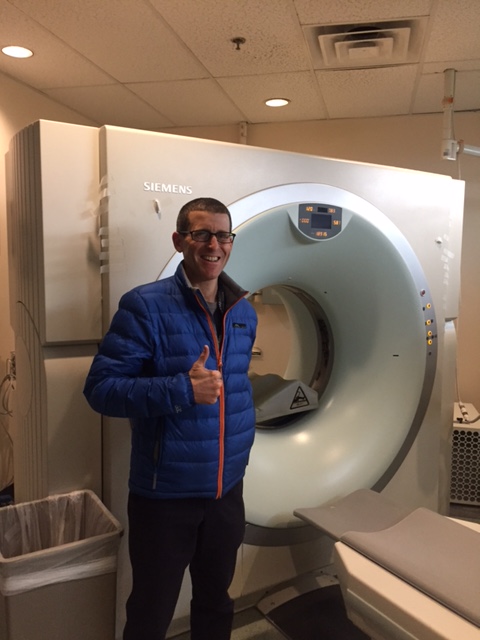
Given the dramatic change in you Fat Burning Zone. Could I ask what intensity you now do you low intensity training at? Do you take it right up to the 168 ppm limit or do you still train the majority of your time at lower intensities and do limited time greater than 168 Ppm Thanks.
Cary i train MUCH lower on a daily basis. this just tells me i can go up to that level and still be safe fat burning. great question
Exactly this is that type of post what I was searching. “Build an Aerobic Base” is really excellent to me. Even “If You Eat Fat You Burn Fat. Eat Carbs You Burn Carbs” is fantastic. I am very satisfied to read these points. But yes, I must be said about this post which is, starting of this post is nice. I love it.
Hi Mark. Love your writing and blog. You’ve made me a better runner. Thank you! Started barefoot a year ago. Sometimes run in Shammas. Love your Natural Running video. I’ve been competing in triathlons recently. Currently training for a half Ironman in June. Got away from the long and slow mantra and have been focusing on intervals. Also started to mess with my low carb diet and started adding back carbs and fueling around training. All probably bad ideas! Time to get back to your advice here! Thanks for the reminder! My question is, how long are your training sessions. For how long should I run daily/weekly below my aerobic threshold? Distance? Time?
Kevin i am random in training with life and weekly demands. some weeks get to run an hour a day others maybe 30 min. all comfortable with drills at the end. see most recent post on these. weekend try to get in a 2 hr run. ok to mix it up and cycle in different things and see your response. thanks for the note:) ….and yes the Shamma sandals get your movement dialed in and they are fun!
Mark, I agree with your ideas about fat burning. I have been running marathons for 3 years now (I am 57 yo) and never take carbs during my long training runs and have diet with modest carb intake. My long runs however are not LSD, I usually do second half at marathon race pace or slightly below. I only bonked once (out of 8 times) during a marathon race and that was because of overheating I believe, no lack of “juice”.
Mountain biker here. I’m wondering if this can be applied to this discipline? I imagine that it can. Would the process be the same?
I’m guessing being on the trainer to ensure proper BPM rather than doing HIIT exclusively might yield better results for me. Work smarter, not harder 🙂
day by day my weight is increase what can i do please give me a subjugation and also give ma a diet plan if it possible
Durlav,
hard over email. so many factors. do you have a good doctor where you are who understands you and the issues of obesity?
I live at 6000 feet and my heart rate climbs faster here when running. How should I factor this into the 180-age formula?
great question and no absolutes here. go by feel. are you comfortable and able to talk? progressing and recovering well? having fun? these are important things
Mark
Dr Mark,
Many thanks for this article, which solidifies a lot of what I’ve learned from you via various podcasts.
I’m getting better at dialling in my ( lower-carb ) diet. Please help by clarifying one crucial point for me please;
You write: ”
This was not absolutely “low carb” for the elite but a healthy 40/30/30 as an example for Mark Allen [40%carb/30%fat/30%protein]
”
Are those ratios by weight in grams? ( as examples , say 160g carbs,120g fat,120g protein OR similarly 200g carbs, 150g fat, 150g protein ).
I assume they’re NOT in calories, right?
many thanks in advance,
Duncan traditionally this is more like the zone and it is percent calories, although no-one counts this stuff exactly https://www.foodnetwork.com/healthyeats/diets/2010/01/diet-101-the-zone-diet-a-k-a-40-30-30-diet
Many thanks for taking the time to clarify that, Dr Mark! I’m currently experimenting with a low-carb diet ( at the moment running at around 15-20 / 65-70 / 15 % calories carbs-fat-protein as the ‘chips’ fall, not be design). I’ll probably tweak that a little now to see what happens. I’ve also recently bought a blood-glucose monitor, which is useful in figuring out what’s going on. On a related topic, looking forward to steadyMD coming to my part of the world ( NZ ). Please keep up the good work in your articles and podcasts.
Hi Mark,
That was great to read and very insightful! I have been trying the low-carb and low heart rate approach for several months now and found lots of positives in terms of the health side of things but still finding that my running pace is suffering. I know from a vo2 test done years ago that i was definitely a carb burner even when walking pretty much so i know i probably have alot of work to do to improve my cross-over. How much improvement did you see in pace in the first 2-3 months? My MAF is 143 but have decided to recently lower this even more to 138 to see if this helps. What other tips do you have in terms of gettting that fat burning engine moving faster?